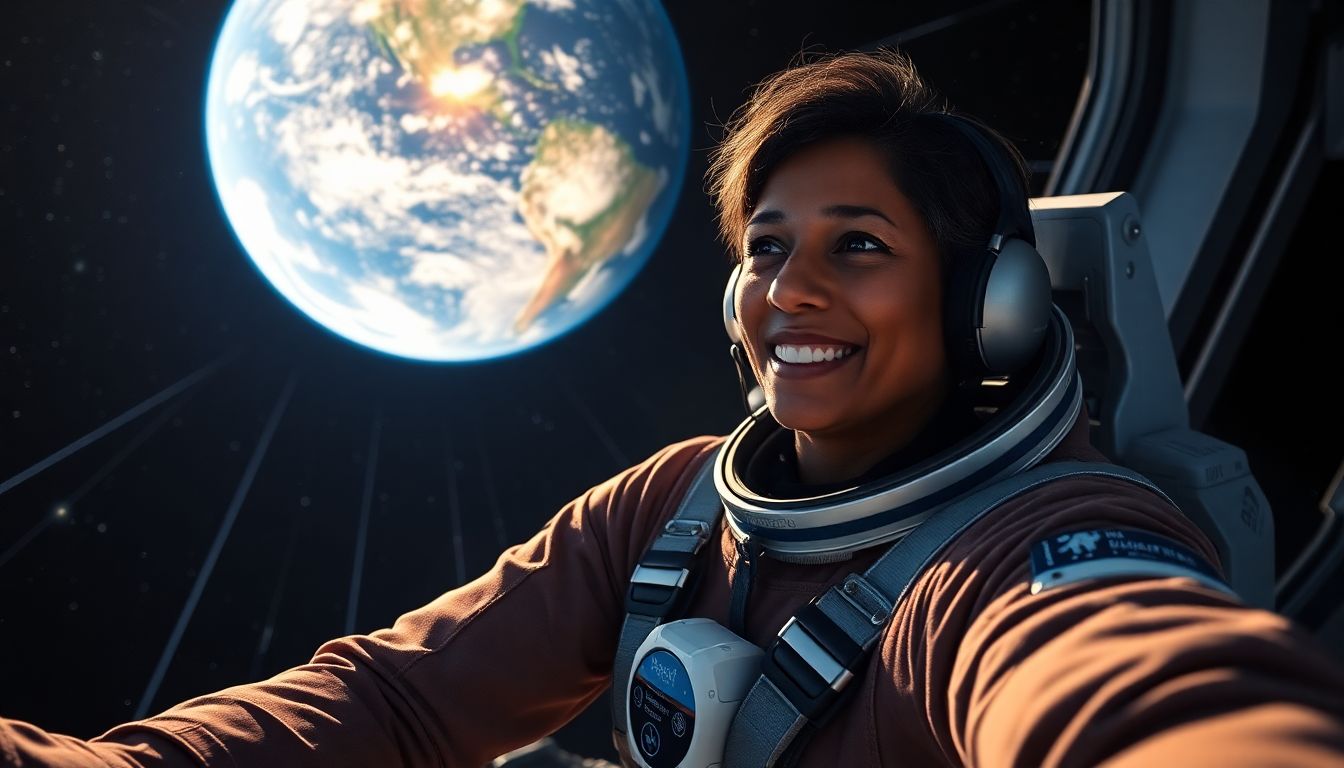
Sunita Williams’ Extended Space Mission: Unraveling the Delays and Her Well-being
Sunita Williams’ recent extension in space has surprised many. As a seasoned astronaut, her contributions to space exploration have been invaluable. This article will explore why her mission was prolonged, the challenges surrounding her return, and provide updates on her health and happiness.
Sunita Williams’ Space Mission: A Deep Dive into the Details
Mission Overview
Sunita Williams initially launched to the International Space Station (ISS) with specific objectives. The mission aimed at conducting important scientific research and testing new technologies to support future endeavors. Scheduled for six months, the timeline was strategically planned to maximize efficiency.
Key Achievements
Throughout her mission, Williams achieved significant milestones.
- Conducted over 200 experiments, focusing on areas like human physiology and materials science.
- Played a vital role in advancing technology for future space habitats and exploration.
- Helped to improve understanding of the health impacts of living in microgravity.
Initial Timeline and Planned Return
Originally, Williams was set to return after six months. The planned return date was initially set for later this year, but recent events have shifted this timeline.
The Unexpected Extension: Why Did It Happen?
Unforeseen Circumstances
Various unforeseen circumstances led to the extended mission.
- Equipment malfunctions required further investigation.
- New research opportunities arose that couldn’t be missed.
- Key logistical challenges emerged, making immediate return impractical.
Crew Health and Safety Protocols
NASA emphasizes crew health and safety. When extending a mission, NASA follows strict protocols to assess risks. The average mission length is about six months, but astronauts face potential health issues, such as muscle atrophy and bone density loss, if they stay too long.
Data and Research Value
In space, data collection is critical. Delaying the return allowed Williams and her team to gather crucial data that could lead to significant scientific breakthroughs. Previous missions like those of Scott Kelly and Mikhail Kornienko also extended for similar reasons, improving our understanding of long-term space travel.
NASA’s Response and Challenges in Bringing Sunita Williams Back
Logistical Hurdles
Bringing Williams back involves complex coordination. Key factors include:
- Spacecraft availability, which is limited due to scheduling conflicts.
- Tight launch windows that cannot be missed.
- The need for international collaboration, which complicates timing.
Budgetary Constraints and Resource Allocation
Adjusting the mission timeline incurs additional costs. NASA must manage its budget while ensuring resources are allocated for safe returns. This presents an ongoing challenge in prioritizing missions.
Safety Precautions and Contingency Plans
NASA plans for contingencies. Various safety measures are in place to handle extended stays. If issues arise, an effective contingency plan ensures that the crew remains protected and well-prepared for any situation.
Sunita Williams’ Well-being: Health and Morale
Physical and Mental Health in Space
Prolonged space travel can affect astronauts. Studies show:
- Physical health can deteriorate due to microgravity.
- Mental health may decline without social interaction, increasing stress.
Countermeasures and Support Systems
NASA employs countermeasures like exercise routines to mitigate health risks. Support systems are in place to monitor astronauts’ physical and mental well-being, ensuring they receive proper care.
Communication and Support Network
Maintaining communication with family and colleagues is vital. Connection to loved ones boosts morale. Williams has expressed that her support network keeps her positive and focused on the mission.
Lessons Learned and Future Implications
Impact on Future Missions
This experience will inform future mission planning. Key takeaways include enhanced safety protocols, improved contingency planning, and strategies for astronaut well-being.
Technological Advancements
Lessons learned will spur technological improvements. Advancements might streamline operations and enhance astronaut living conditions, reducing risks of extended stays.
International Collaboration
International cooperation is essential in space exploration. Successful collaborations can help tackle unforeseen challenges and ensure safe missions.
Conclusion
In summary, Sunita Williams‘ mission extension stems from unforeseen circumstances, logistical challenges, and crucial research needs. NASA prioritizes her well-being, ensuring she remains healthy and happy. This event highlights the importance of flexibility in space exploration, shaping strategies for future missions.
Ola Gen 3 Scooter: Smarter, More Powerful, and Feature-Rich Up to 320 km Range

